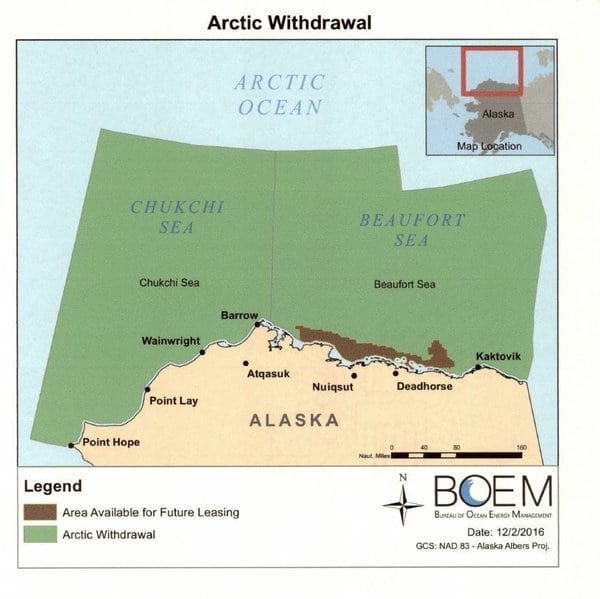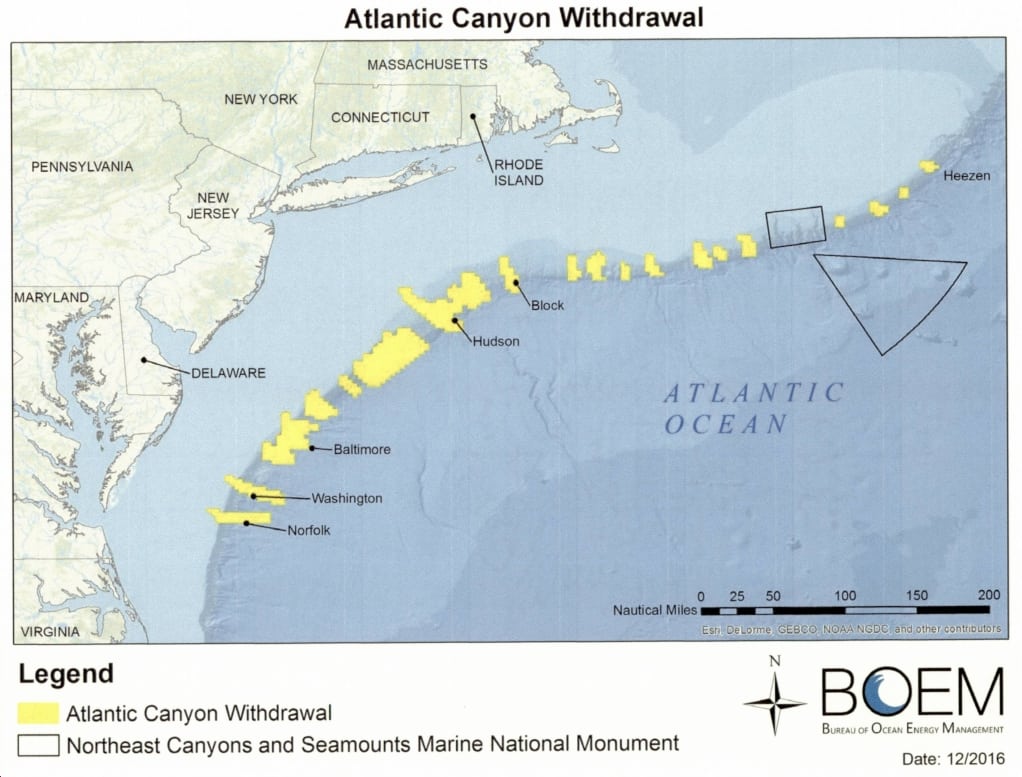Obama and Trudeau Ban Oil & Gas Leasing in Arctic, Parts of Atlantic
In a joint statement on December 20, the leaders of the United States and Canada announced that they had developed a new partnership that effectively bans additional licenses for oil and gas drilling in the Arctic and parts of the Atlantic Ocean.
In announcing the action, President Barack Obama and Prime Minister Justin Trudeau said they took the step ensuring “a strong, sustainable and viable Arctic economy and ecosystem, with low-impact shipping, science based management of marine resources, and free from the future risks of offshore oil and gas activity.”
Specifically, the U.S. designates “the vast majority of U.S. waters in the Chukchi and Beaufort Seas as indefinitely off limits to offshore oil and gas leasing, and Canada will designate all Arctic Canadian waters as indefinitely off limits to future offshore Arctic oil and gas licensing, to be reviewed every five years through a climate and marine science-based life-cycle assessment.”
 |
| Area of U.S. Arctic waters closed to future oil and gas drilling in the joint U.S.-Canadian agreement. Source: Bureau of Ocean Energy Management |
The actions taken by both nations do not affect leases already held or drilling already under way by oil and gas companies.
The announcement included statements of support for Arctic communities and commitments to low-impact shipping corridors and science-based management of Arctic fisheries. However, the impact on oil and gas drilling has been getting the most attention from those in favor of and opposed to the actions.
The Arctic is a critical and irreplaceable part of our world. Let’s make sure we protect it for future generations: https://t.co/y7cHx5GW2l pic.twitter.com/IiJevST12f
— The White House (@WhiteHouse) December 20, 2016
Interior Secretary Sally Jewell praised the actions protecting the Arctic and portions of the Atlantic that “encompass 3.8 million acres in the north and mid-Atlantic Ocean off the East Coast and 115 million acres in the U.S. Arctic Ocean. Including previous presidential withdrawals, today’s action protects nearly 125 million acres in the offshore Arctic from future oil and gas activity.” The Atlantic protection covers “31 canyons, extending from Heezen Canyon offshore New England to Norfolk Canyon offshore of the Chesapeake Bay. The largest, Hudson Canyon, reaches depths greater than 10,000 feet, comparable in scale to the Grand Canyon, which is 6,093 feet at its deepest. The canyons are regions of enhanced biodiversity, home to numerous species including deep-water corals, deep-diving beaked whales, commercially valuable fish, and significant numbers of habitat-forming soft and hard corals, sponges and crabs,” Jewell explained.
 |
| Atlantic canyons permanently protected from oil and gas drilling. Source: Bureau of Ocean Energy Management |
Bloomberg reported that the American Petroleum Institute, on the other hand, views the move as “detrimental to national security.” In a statement on today’s agreement, Obama noted that “In 2015, just 0.1 percent of U.S. federal offshore crude production came from the Arctic and Department of Interior analysis shows that, at current oil prices, significant production in the Arctic will not occur. That’s why looking forward, we must continue to focus on economic empowerment for Arctic communities beyond this one sector.”
Today, we join the US in announcing measures to ensure a strong, sustainable & viable Arctic economy and ecosystem: https://t.co/TC7Y5PRIBq — Justin Trudeau (@JustinTrudeau) December 20, 2016
Obama reportedly used the 1953 Outer Continental Shelf Lands Act as the means to protect large portions of the Chukchi and Beaufort seas and “a string of canyons in the Atlantic stretching from Massachusetts to Virginia.”
As CBC noted, environmental groups had long been calling for a permanent ban on new drilling in the Arctic, but the election of Donald Trump, who campaigned on opening up more offshore drilling, gave greater urgency to the action.
The Washington Post and other news outlets reported that White House officials describe the action as something that cannot be undone by a future president, though it isn’t clear if Congress could act to overturn the decision.
—Gail Reitenbach, PhD, editor (@GailReit, @POWERmagazine)